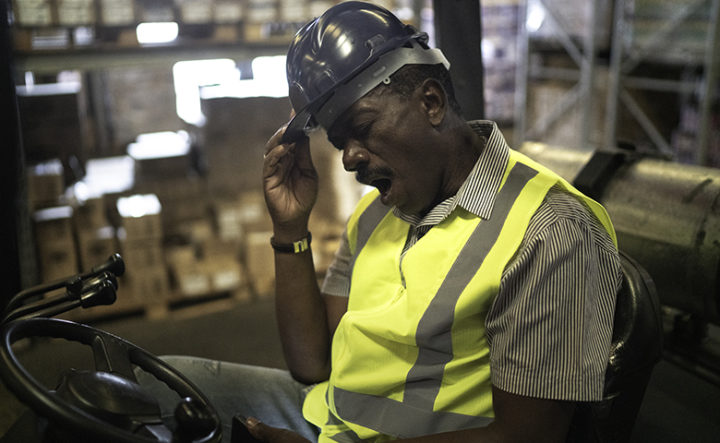The concept of human factors has wide-ranging implications, especially for safety. For anyone in charge of plant operations, safety, or production, it’s incredibly important to understand what human factors are, how they affect worker safety, and how they tie into your company’s structures and processes.
There’s lots of research on human error, lots of industry-wide conversations about human factors and lots of theories around the best ways to address them—either by focusing on the person or the system. The sheer number of variables at play between people, work and safety on a daily basis make it hard for safety professionals to nail down completely and consistently in the context of their specific situation.
Fortunately, a new educational webinar is dedicated to explaining how human factors affect safety, production and operations excellence. It offers a walk-through of the major elements of human factors in order to help company leaders map out their impact and plan an effective strategy to deal with them.
For the purposes of workplace safety, human factors are the physical and mental states that affect how we think and act. Basically, human factors cause people to deviate from their normal behavior. And when workers start changing the ways they do things on the fly, whether it’s because they’re in a rush or they’ve become distracted, their risk of injury goes way up.
Here’s a quick example of what this looks like. On an individual level, when people get tired or stressed out, they’re less likely to recognize hazards around them, less likely to think through their decisions, and more likely to forget about safety rules—or to rationalize breaking them. All because of their state of mind.

But states like fatigue or confusion don’t just happen at the individual level. As the free webinar explains, human factors also affect workplaces on a larger scale, because human factors can be induced by work systems or other people.
When a supervisor urges people to hurry up, workers will typically pick up the pace—and it will also be more likely that they trip on something or pull a muscle when they don’t take the time to use the proper lifting techniques. An aggressive production schedule, poorly designed work area or any number of other structural or systemic issues can all cause or exacerbate human factors in the workplace.
An integrated approach to human factors management
Human factors are conditions that happen to—and that happen because of—people. In order to reduce the danger of human factors, those conditions need to be changed. And that takes a dedicated, holistic approach.
This is where even knowledgeable safety professionals come up a little bit short. EHS folks may recognize that what seems like a problem with sprains and strains is actually a human factors problem—because the sprain and strain incidents they’ve analyzed happen predominantly at the end of shifts when workers are physically fatigued and altering their actions in ways that inadvertently lead to injuries.
That’s an insightful human factors analysis, but there’s still more digging to do. In this scenario, how should the safety professional deal with or attempt to resolve the issue of fatigue? The human factors webinar gets to the heart of the matter by discussing why it’s so important to look at the entire picture. Yes, individual workers naturally grow tired, but the level of fatigue must also be influenced by the way the organization operates—and that means that change to a process or system may be required.
In order for EHS leaders and other safety folks to begin understanding what’s causing human factors, they need a framework to help them map out how human factors circulate throughout an organization, moving individual employees into work systems, and then back to employees.
And that’s when the webinar starts getting really interesting. Because as it explains, taking an organization-wide approach can have a number of surprising benefits.
The value of a human factors framework
As the presentation makes clear, if you try to solve human factors by only addressing it at the individual level then you’re effectively fixing a leaky boat by bailing it out—you may deal with the immediate problem but you’re not doing anything to prevent more water from coming in.
Perhaps the most eye-opening part of this webinar is how to use a framework to address human factors on multiple levels at once. The presentation talks about how to deal with the pressing issue of human factors at the ground level, as it affects individual workers by putting them in potentially dangerous physical and mental states. The webinar also outlines how to identify hidden causes of human factors at the organizational level. Human factors can become embedded in technical systems, the work environment and in how groups of people operate—and when this happens, the effects of human factors in the workplace like fatigue or distraction are amplified, often unbeknownst to the supervisors, managers and directors who oversee the workplace.
So what should business leaders do about it? The key to properly managing human factors on multiple levels is to use a framework that maps out the interaction between people and systems. There are numerous benefits to using a framework approach to dealing with human factors, from getting buy-in from multiple departments to reducing injuries and improving performance.

But the trick is to deploy the framework properly and keep it up to date with a constant stream of data. Plus, there’s the issue of how to act on the information that the framework provides. It’s not overly complicated, but it does have to be done right, and the informative webinar on using a safety framework is the best way to get a primer on how it all works—and how management and safety professionals can begin using it themselves.
There’s too much detail on the ins and outs of properly using a human factors framework to improve safety and productivity here—after all, that’s what the presentation is for—but it’s clearly a smart approach for companies that recognize they have a human factors problem, or for businesses that want to take a step forward with their safety program. (It’s also effective for organizations that want better alignment between the operations and safety departments.)
Getting started with a safety framework to address human factors
There’s one last catch with human factors that’s surprisingly easy to forget about: they affect every single organization a little bit differently. Yes, every worker will get tired if they don’t take breaks, but the ways that individual systems and people are affected by human factors depends on the specific individuals, work environment and other factors.
This means that every organization needs to take a close look at what’s going on in their workplace. How are your supervisor’s communication skills affecting safety? How do employees’ awareness levels increase or decrease their risk of injury? And what incident patterns are being reinforced by the systems that are currently in place?
It’s worth asking questions like this and the human factors framework webinar is a great way to learn which questions are worth asking.
The human factors framework webinar is only twenty minutes and is available on-demand for free. Sign up here to watch it now or later.
There’s tons of other useful info in the webinar too, including:
- the distinction between safety culture and safety climate (and why it matters)
- details on using a safety framework as a blueprint for organizational change
- an overview of common human factors challenges
- insight into leveraging supervisors for better employee engagement
- important climate success factors
Thinking in terms of a safety framework is the best way to help everyone connect the dots between safety, productivity and organizational systems. It can transform linear thinking (safety vs. productivity) into an effective three-dimensional strategy (dealing with human factors is a rising tide that lifts up both safety and productivity). And this webinar is the clearest—and shortest—explanation of how it works. It’s an informative and engaging overview and is well worth the time for anyone interested in improving safety outcomes or organizational performance.

